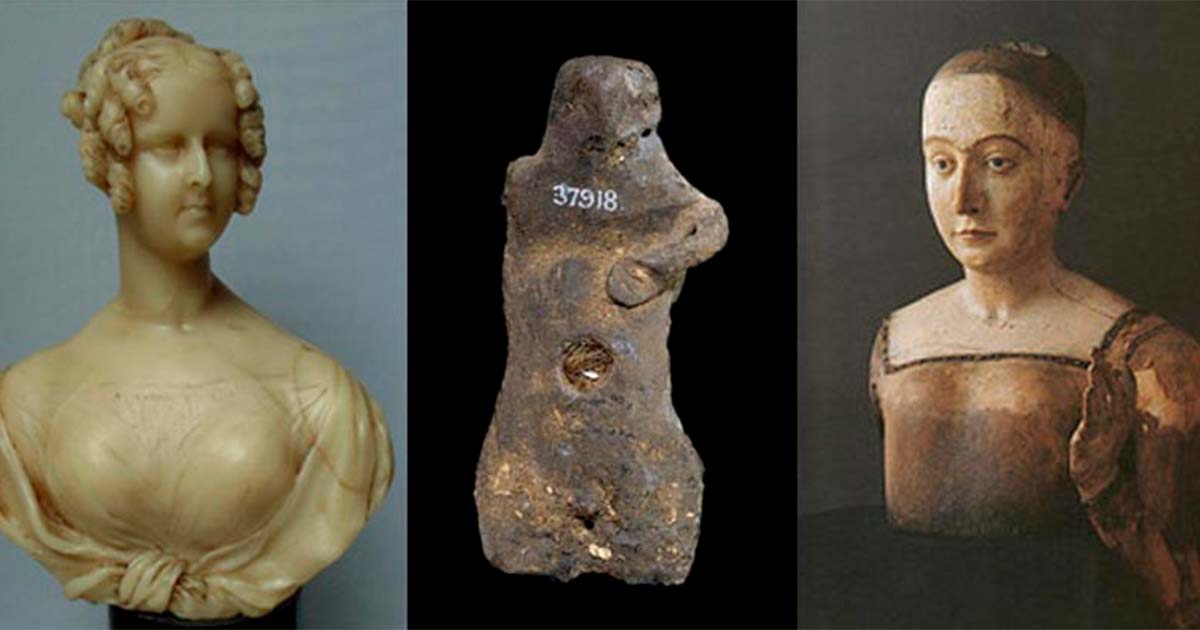Eerie Ancient Wax Sculptures For Hexing Enemies and Destroying Demons
The eerie, sightless stare of wax-figure mannequins disconcerts many an onlooker, but the famous wax museums of today which host hyper-realistic looking wax models of celebrities and historical wax sculptures are the modern-day remnants of the ancient practice of wax modelling dating back to the ancient world. The wondrous works that came of this important material reveal the aesthetics, beliefs and rituals of ancient cultures.
Early Wax Creations Around The World
There are few ancient cultures around the world that did not at some point use wax to make tablets that were inscribed upon with a stylus, or made votive figures or amulets, or used wax in conjunction with other materials such as clay or molten metal to create weapons, implements, and art.
Mesopotamia, China, Africa, Indus Valley, Greece, Middle East, Europe, Latin America; all had an ancient tradition of “lost wax” casting technique. This process of making hollow or solid creations involves coating models in wax and then clay. The encased wax is then melted out through channels and holes, and replaced with molten metal.
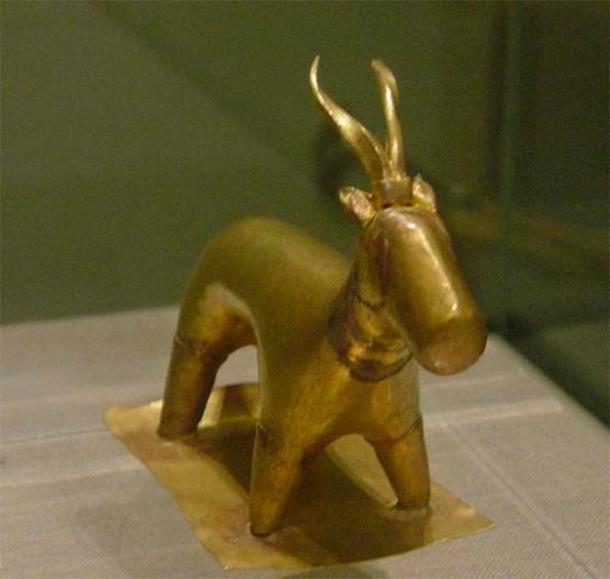
17th century AD gold ibex sculpture about 10 cm long made with lost-wax technique, from excavation on Santorini. (Public Domain)
Waxen Figures to Drive Out The Demons, Or to Fall in Love
Some Ancient Egyptian figures and amulets made out of wax have survived. These objects were thought to be sacred, as beeswax was believed to be a powerful agent, both protective and destructive. It was malleable and easily burned, and thus thought to possess the ability to inflict harm or change on another. The earliest wax figures were funerary goods, dating to the First Intermediate Period (2100 BC). These small humanoid figures are thought to represent the dead. Amulets commonly were in the form of the four children of Horus, and were placed on mummies.
These figurines were used to cast spells on people, and the sculptures were made in a rudimentary likeness of the target. In ancient texts on special magical rites, directions can be found for creating wax models of enemies in order to cause them harm.
In an example from the Roman period, now in the British Museum, one ancient wax figure has human hair embedded in the navel, supposedly to grant it the essence of the target. It also contains a scrap of papyrus upon which a spell was written (but is no longer legible). If the desired result was a curse, it was believed that the hair of a dead person would make the result more potent.
Written evidence suggests that evil demons or enemies of the state were recreated in wax figures and then destroyed ritually in large temple ceremonies.

Ancient wax figure with human hair pushed into the navel, and an inscription embedded in the back. (© Trustees of the British Museum / CC BY-NC-SA 4.0)
Not all wax figures and spells intended harm. In some cases the desired result was a change in another’s behavior, or even to gain someone’s love.
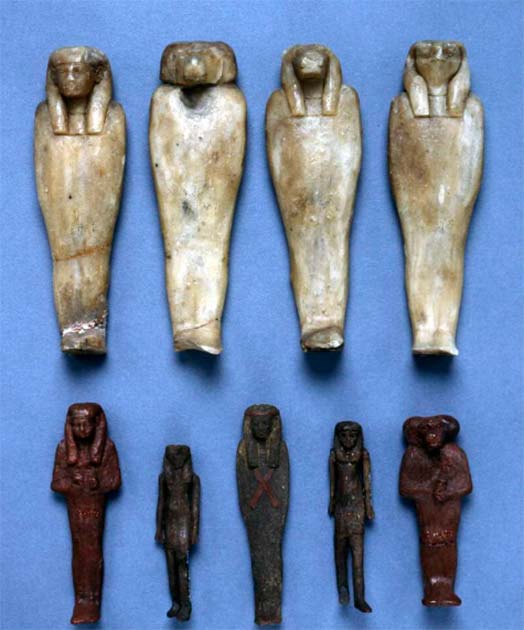
A mummified figure of Hapy, god of the Nile, characterized by a baboon-like head and made from red clay infused with beeswax. (© Trustees of the British Museum /CC BY-NC-SA 4.0)
In ancient Egyptian beliefs, beeswax was thought to possess mystical qualities, and wax employed for sculptures like this one was intentionally dyed to enhance its symbolic power.
- 11,000 Years Old: New Dating of Shigir Idol reveals it is Oldest Wooden Sculpture in the World
- The artistic value of the magnificent sculptures of Amphipolis
Wax Sculpture Of Greece And Rome, And Punic Wax
First century AD texts speak of harvesting wax from beehives, and Pliny the Elder details the creation of Punic wax, also called encaustic, or hot wax painting. Pigments were added to hot, fluid beeswax which was then used to paint images, often on wood or canvas. The artist had to act swiftly before the wax cooled with brushes, and then could manipulate or even sculpt the paint after it had hardened.
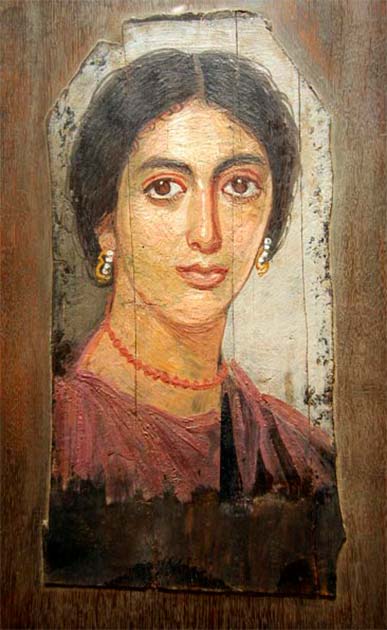
Fayum mummy portraits were painted using the encaustic wax technique. Portrait of a woman from Al-Faiyum, Egypt, Roman Period, circa 100-150 AD. (Public Domain)
Ancient Greek children had wax figurine dolls, and small wax statues of gods were made into votive offerings for religious ceremonies. Like the Egyptians, wax images were often connected with deities or people, and magical properties were attributed to them.
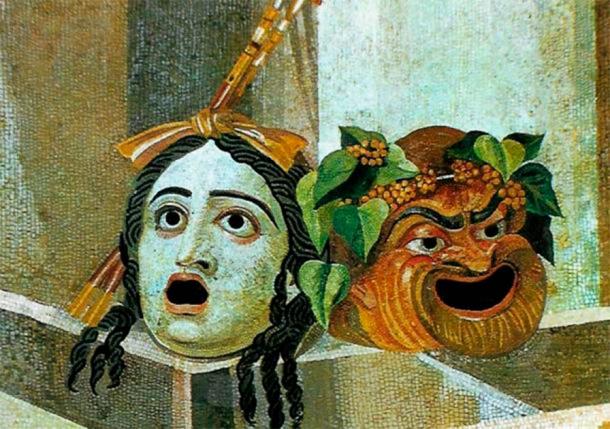
Roman masks depicted in mosaic. (Public Domain)
This perceived connection between wax and sacred, magical power was present in Ancient Rome, where masks of relatives and ancestors were created out of beeswax. Wax impressions were made of the recently deceased’s face, which were then preserved and handed down within families. Called imagines maiorum, the masks would be worn or carried by professional mourners during funeral processions or displayed on special occasions. The vivid, lifelike impressions the wax made of the dead visage was an effective presentation, making it seem as if the dead had come alive.
However, there were limitations to the masks: in time they became discolored and disfigured by handling and warm temperatures, as well as from the abuse of making copies. Annetta Alexandridis, associate professor of art history at Cornell University said of the ancient wax works, “They were constantly transformed and probably never looked pristine, and I think probably in the end more like zombies than anything else.”
- Excavations reveal Gobekli Tepe had oldest known sculptural workshop
- Significance of Roman Curse Tablets recognised in Memory of the World Register
Beeswax was very expensive at the time, and the choice of material was a social distinction, selected as a way to express power and wealth. None of the waxen masks survive today, but art and text describe their uses.
Middle Ages Europe Effigies
The use of wax effigies and masks continued through the middle ages, and in Europe. Dead bodies were sometimes displayed on top of the coffin at funerals, but this was problematic in hot weather or after a length of time. Wax figures thus became a preferable and common part of funeral ceremonies for notable or important people in society. Effigies, or soft bodies of cloth stuffed with a filler, often straw, would wear the clothing of the deceased. Lifelike wax hands and heads would be made, and the figure would be shown on top of a coffin or tomb either temporarily or permanently.
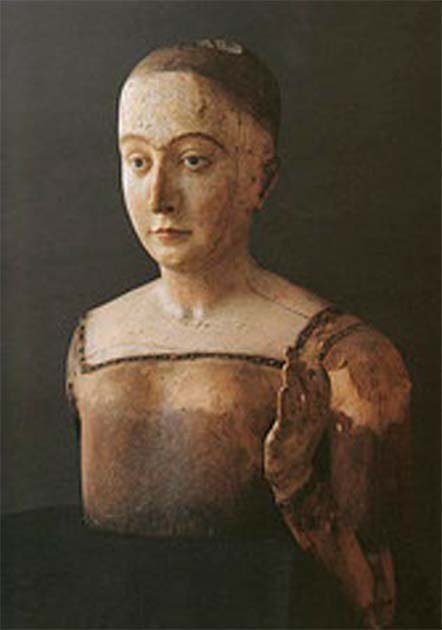
The funeral effigy (without clothes) of Elizabeth of York, mother of King Henry VIII, 1503, Westminster Abbey. (Public Domain)
Wax portraiture was also popular, and the artistic masters of the Renaissance modelled their sculptures in wax before going on to make the full pieces.
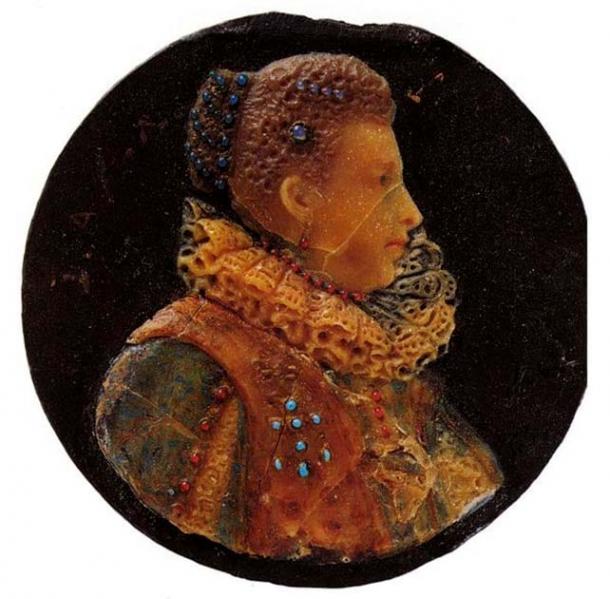
Wax portrait of woman, 1618. (Public Domain)
In the 19 th century wax dolls and wax portraits of notorious people came into fashion, with famous collections such as Madame Tussaud’s Wax Museum becoming popular tourist attractions.
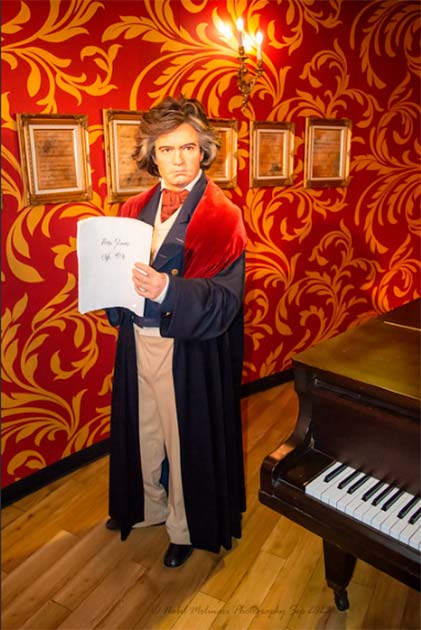
Madame Tussauds wax museums are a major tourist attraction exhibiting wax sculptures of famous historical figures and celebrities. In the photo: Ludwig van Beethoven at the Madame Tussauds museum in Bangkok (Nabil Molinari/Flickr)
With the advent of photography, wax impressions were no longer necessary to preserve the image of a loved one or a notable individual. Additionally, the invention of synthetic polymers and plastics made the use of wax in sculpture and art less prevalent, and existing wax pieces are now often preserved so they are not lost to time.
Top image: Queen Adelaide wax bust from 1830. Ancient wax sculpture. Funeral effigy. Source: Timothy Millett/CC BY-SA 4.0, © Trustees of the British Museum /CC BY-NC-SA 4.0, Public Domain
By Liz Leafloor
References
Encyclopædia Britannica. 2015. "Wax Sculpture". Available at: https://www.britannica.com/art/wax-sculpture
Gannon, M. 2014. “Uncannily Lifelike Roman Masks Recreated in Wax” Available at: https://www.livescience.com/42334-lifelike-roman-wax-masks-recreated.html
Google Books. Pliny (the Elder). “The Natural History of Pliny, Volume 6”. Available at: https://books.google.ca/books?id=9zwZAAAAYAAJ&pg=PA282&lpg=PA282&dq=pliny+natural+history+wax&source=bl&ots=Jm6VZXNnr2&sig=ESwBn_QtLZFVL2S6HfphlkIjDDo&hl=en&sa=X&ved=0CCIQ6AEwAWoVChMI4fefoOT-xwIVTxGSCh3Ytgzf#v=onepage&q=pliny%20natural%20history%20wax&f=false
Hemingway, C, and S. Hemingway. 2000. “The Technique of Bronze Statuary in Ancient Greece”. 2000. Available at: https://www.metmuseum.org/toah/hd/grbr/hd_grbr.htm
Muscato, C. 2015. “The Lost-Wax Casting Technique in Antiquity”. Available at: https://study.com/academy/lesson/the-lost-wax-casting-technique-in-antiquity.html
Trustees of the British Museum. 2015. “Wax Figure”. Available at: https://www.britishmuseum.org/explore/highlights/highlight_objects/aes/w/wax_figure.aspx
University College London. 2002. "Amulets: Wax". Available at: https://www.ucl.ac.uk/museums-static/digitalegypt/Welcome.html
















